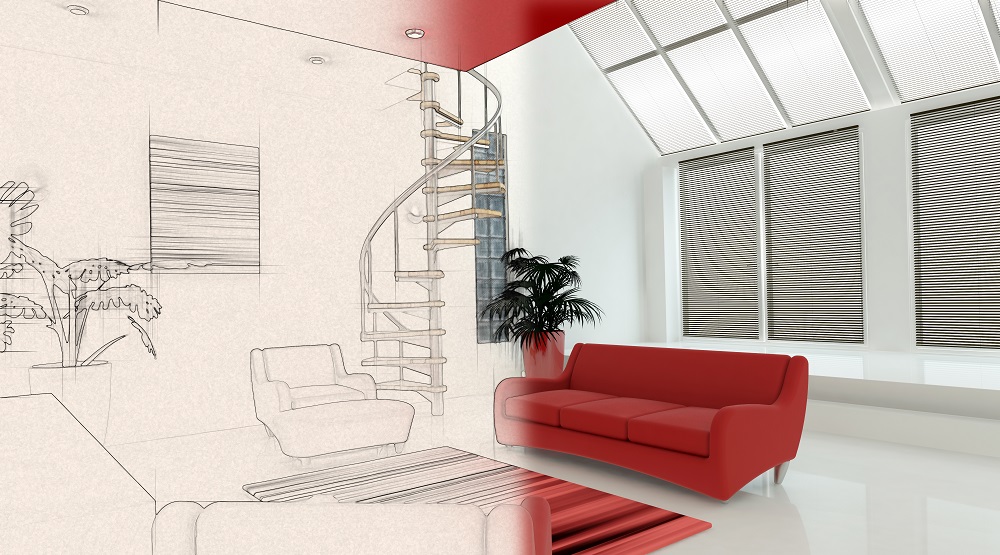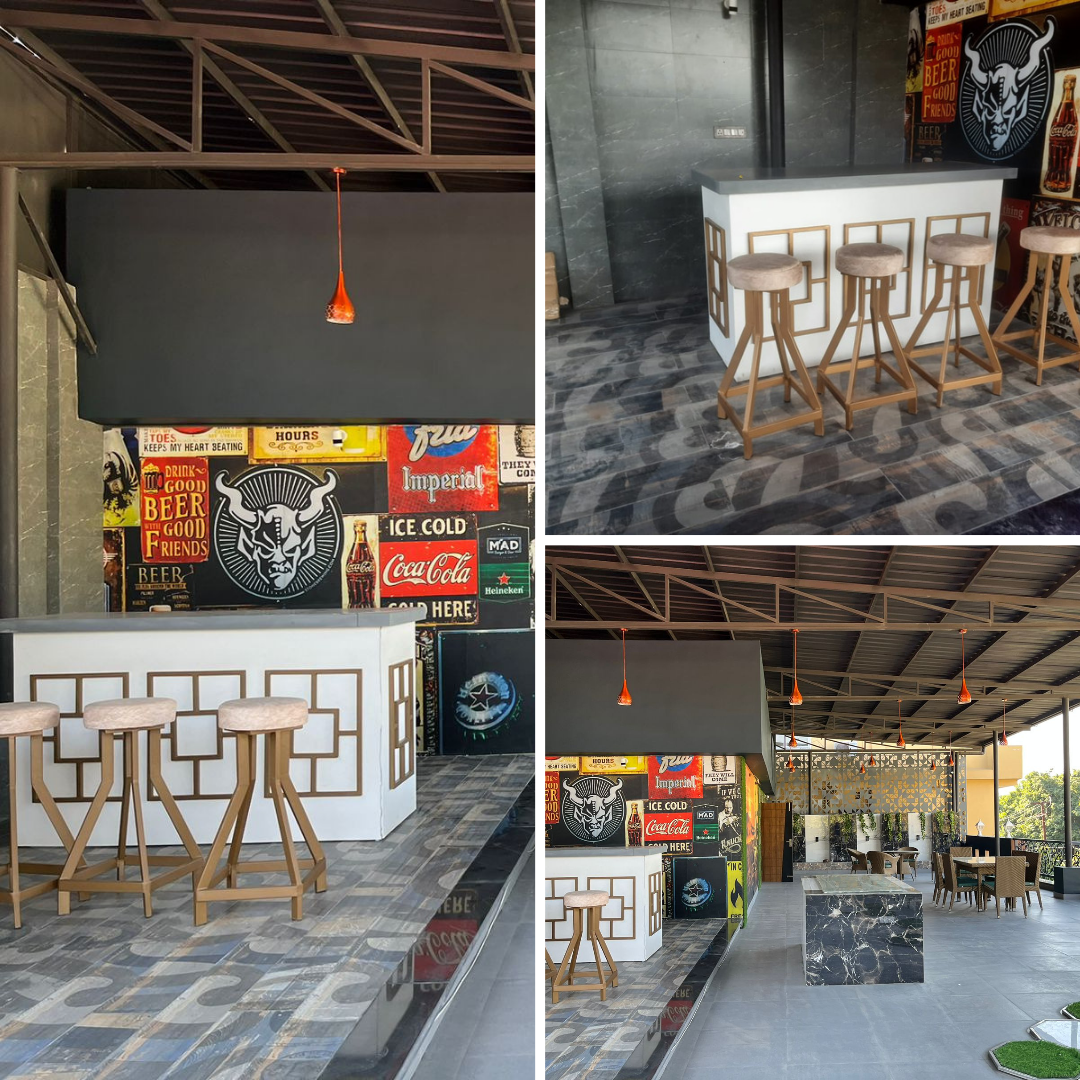Civil interior design is a specialized part of interior work that focuses on the structural and foundational aspects of any indoor space. It includes all the basic construction and modification work needed before the decorative design begins.
This means breaking or making walls, shifting doors and windows, flooring, ceiling work, electrical layouts, plumbing, and more. In short, civil interior work creates the base structure that makes way for the final interior design.
Unlike general interior design, which focuses more on looks and decoration, civil interior design deals with the bones of the building. It involves deep technical knowledge and proper planning to ensure safety, durability, and proper function.
Why is Civil Interior Work Important?
Civil interior work is important because it lays the foundation for the entire space. If you don’t get this part right, even the most beautiful furniture or lighting won’t help.
Here are some key reasons why it matters:
-
Strength and Safety: Civil work makes sure that the structure is strong and safe for living or working.
-
Better Functionality: It ensures everything is placed in the right spot — from electric points to plumbing lines.
-
Customization: You can modify spaces as per your needs — like adding a new wall, changing the layout, or expanding a room.
-
Longevity: Good civil work ensures that the interiors last longer and require less maintenance.
What Does Civil Interior Work Include?
Let’s take a closer look at the various elements of civil interior design.
1. Wall Construction and Demolition
Sometimes, you may want to change the layout of a space. This may involve building new partition walls or removing existing ones. This is where civil interior work begins.
2. False Ceiling and Roof Work
False ceilings aren’t just for looks. They hide electrical wires, provide space for air conditioning vents, and improve lighting. Civil interior designers create these ceilings using materials like POP or gypsum.
3. Flooring
Civil work includes installing new flooring — be it tiles, marble, vinyl, or wooden flooring. The process involves leveling the floor, applying adhesives, and laying the materials properly.
4. Plumbing
Water supply lines, drainage systems, and bathroom fittings are a part of civil interior work. A well-planned plumbing layout avoids future leaks and repair problems.
5. Electrical Work
Before you install lights, fans, or other gadgets, the electrical wiring needs to be properly placed inside walls or ceilings. This is a major part of civil interior design.
6. Windows and Doors
Whether you want to move a window or add a new door, civil work is required. It also involves installing new window frames, doors, and providing proper ventilation.
7. Painting and Finishing
Once the structural work is complete, the walls are plastered and painted to prepare them for the final interior decoration.
8. Waterproofing
Especially important for bathrooms, kitchens, and terraces. Civil designers apply waterproof layers to prevent water damage in the future.
Civil Interior Design vs Interior Decoration
| Aspect | Civil Interior Design | Interior Decoration |
|---|---|---|
| Focus | Structural and foundational work | Visual and aesthetic enhancements |
| Work includes | Walls, ceilings, flooring, plumbing | Furniture, lighting, curtains, accessories |
| Involves construction? | Yes | No |
| Time to start | At the beginning of a project | After civil work is complete |
| Skills needed | Civil engineering, architecture | Design, color theory, styling |
When Do You Need Civil Interior Services?
You might need civil interior design services in these situations:
-
You’re building a new home or office from scratch.
-
You’re doing a full renovation and want to change the structure.
-
You need to combine two rooms or create a partition.
-
You’re installing new flooring or false ceilings.
-
You want to upgrade plumbing or electrical lines.
-
You are moving into a bare-shell property with no existing interiors.
Who Does Civil Interior Work?
This kind of work is usually handled by a civil contractor or an interior firm that provides both civil and decorative design services. The team may include:
-
Civil engineers
-
Plumbers
-
Electricians
-
Tile and flooring experts
-
Painters
-
Masonry workers
These professionals work together to ensure that the base structure is strong and ready for finishing work.
Tips Before Starting Civil Interior Work
-
Hire Licensed Professionals: Always choose someone with experience and good reviews.
-
Make a Plan: Know what changes you want and get them on paper.
-
Set a Budget: Include some buffer for unexpected costs.
-
Get Necessary Permissions: Some structural changes need approval.
-
Check Materials: Use good-quality materials to avoid frequent repairs.
-
Ask for Timeline: Know how long the work will take so you can plan accordingly.
Civil Interior Design and Sustainable Spaces
In modern times, green building practices are becoming popular. Civil interior designers can use eco-friendly materials, reduce waste, and create energy-efficient layouts. This not only helps the environment but also reduces your electricity and maintenance bills.
Final Thoughts
Civil interior design may not look as glamorous as painting walls or buying a stylish sofa, but it is the heart of any interior project. Without strong and well-planned civil work, the most expensive designs can fail quickly.
Whether you’re building a new home or renovating an old one, civil interior design ensures that your space is safe, smart, and long-lasting. It gives you the right base to express your style and live comfortably.
Also Read:
- What Is a Mood Board in Interior Design?
- What Is Modern Classic Interior Design?
- What is Green Interior Design?
- What Are the Different Materials Used for Interior Design?
- Is Interior Architecture the Same as Interior Design?
Frequently Asked Questions
Q1: What does civil interior work include inside homes?
A1: Civil interior work includes breaking or building walls, flooring, ceiling work, plumbing, and electrical layouts. It helps in changing the structure of a room or house based on your needs. It is done before decoration and is important for strength and function of the space.
Q2: Is civil interior design different from decoration?
A2: Yes, it is very different. Civil interior design involves structural work like walls, flooring, ceilings, and pipes. Interior decoration comes later and includes painting, furniture, lights, and curtains. Civil work builds the foundation while decoration makes the space look good.
Q3: Do I need civil work for home renovation?
A3: If your renovation involves changing walls, flooring, plumbing, or electric wires, then yes — you need civil interior work. It gives your home a proper structure for all other changes. If it’s just new paint or furniture, civil work may not be needed.
Q4: Who performs civil interior design work?
A4: Civil interior work is done by trained professionals like civil contractors, electricians, plumbers, tile workers, and masons. Usually, an interior design company hires a team of these experts. It is important to hire licensed people to ensure safety and good quality work.
Q5: How long does civil interior work usually take?
A5: The time depends on the size of the project. Small civil work may take 1–2 weeks, while full renovations may take 1–2 months or more. Factors like material availability, weather, and changes in plan can also affect how long the work will take.






















